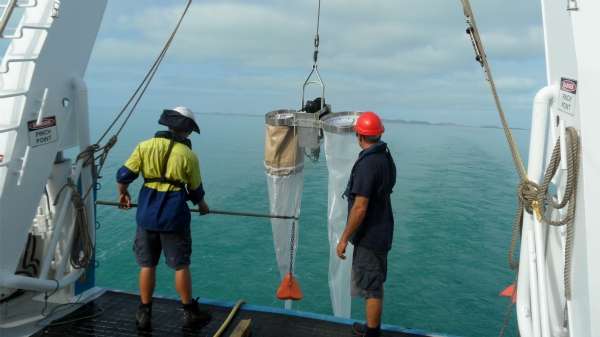Zooplankton growth rates key to low fish numbers

Small fisheries in Western Australian waters are at the mercy of zooplankton, with short-lived growth in the Kimberley.
The Australian Institute of Marine Science (AIMS) studied zooplankton, the second link on the marine food chain, who feed on microscopic phytoplankton and in turn become food for larvae of the finfish that fishermen seek out.
While Australia has the third largest fishing zone in the world, its rate of fish production is ranked 55th world wide, placing it below even landlocked countries such as Uganda.
AIMS principal research scientist David McKinnon compared zooplankton biomass and growth rates in the Kimberley with those on the Great Barrier Reef in Queensland to see if the explanation for low fish production in both places might be found in the availability of their zooplankton food.
He expected to find similar numbers of plankton with similar growth rates at similar latitudes on each side of the country.
"While we found that the production of zooplankton can be high, it does not appear to be sustained for long enough periods to work its way up the food chain to support high fishery production," Dr McKinnon says.
Dr McKinnon discovered that the biomass of Kimberley zooplankton is higher than that found in the waters of the Great Barrier Reef and that the plankton grew faster in the Kimberley. In combination, this meant that the biomass of Kimberley plankton accumulates four times faster than that on the east coast, meaning that the Kimberley has greater availability of food for larval fishes.
"We think that this is probably due to the high tidal energy in the Kimberley," he says.
There was also remarkably little difference in zooplankton growth rates between the wet and dry seasons.
The team collected zooplankton by hauling nets of nylon gauze with holes sized about one 10th of a millimetre.
Zooplankton is dominated by tiny crustaceans less than one millimetre long called copepods, as well as a diverse assemblage of other organisms such as jellyfish and the larvae of many species that later settle on to the sea bottom.
Once collected, each sample was examined to determine which plankton species were present, and sophisticated biochemical methods were used to measure their growth.
Provided by Science Network WA
This article first appeared on ScienceNetwork Western Australia a science news website based at Scitech.




















